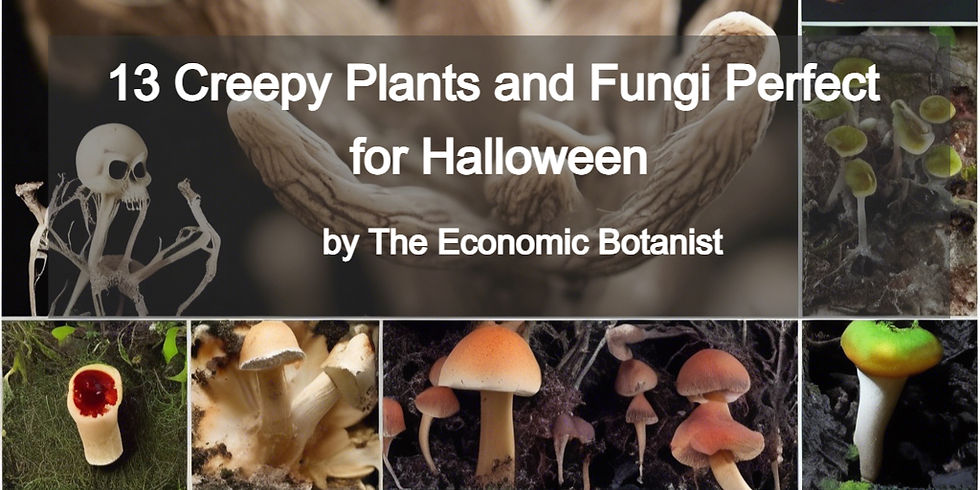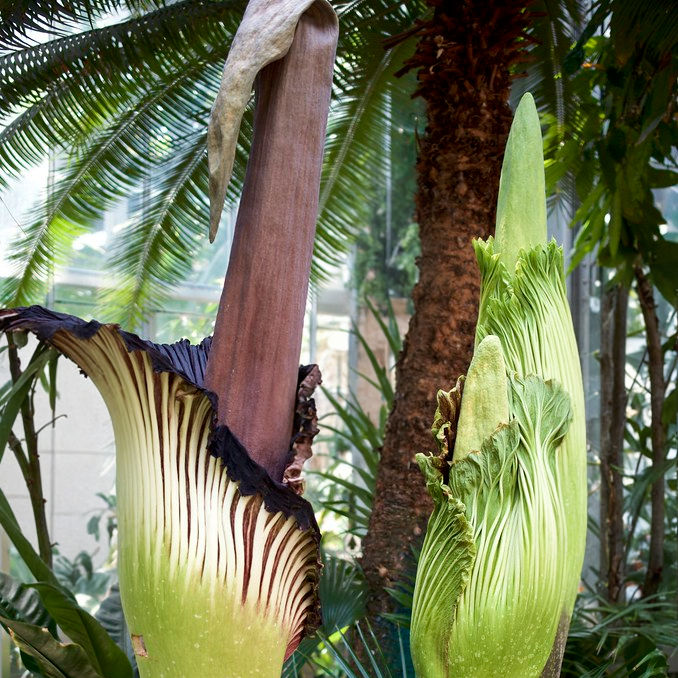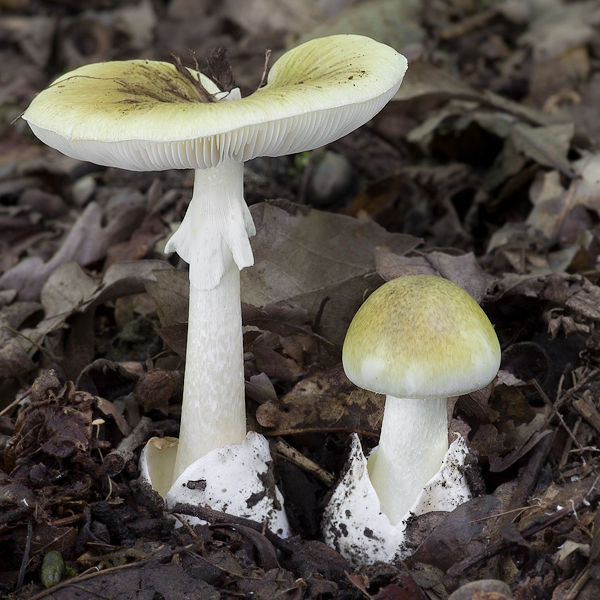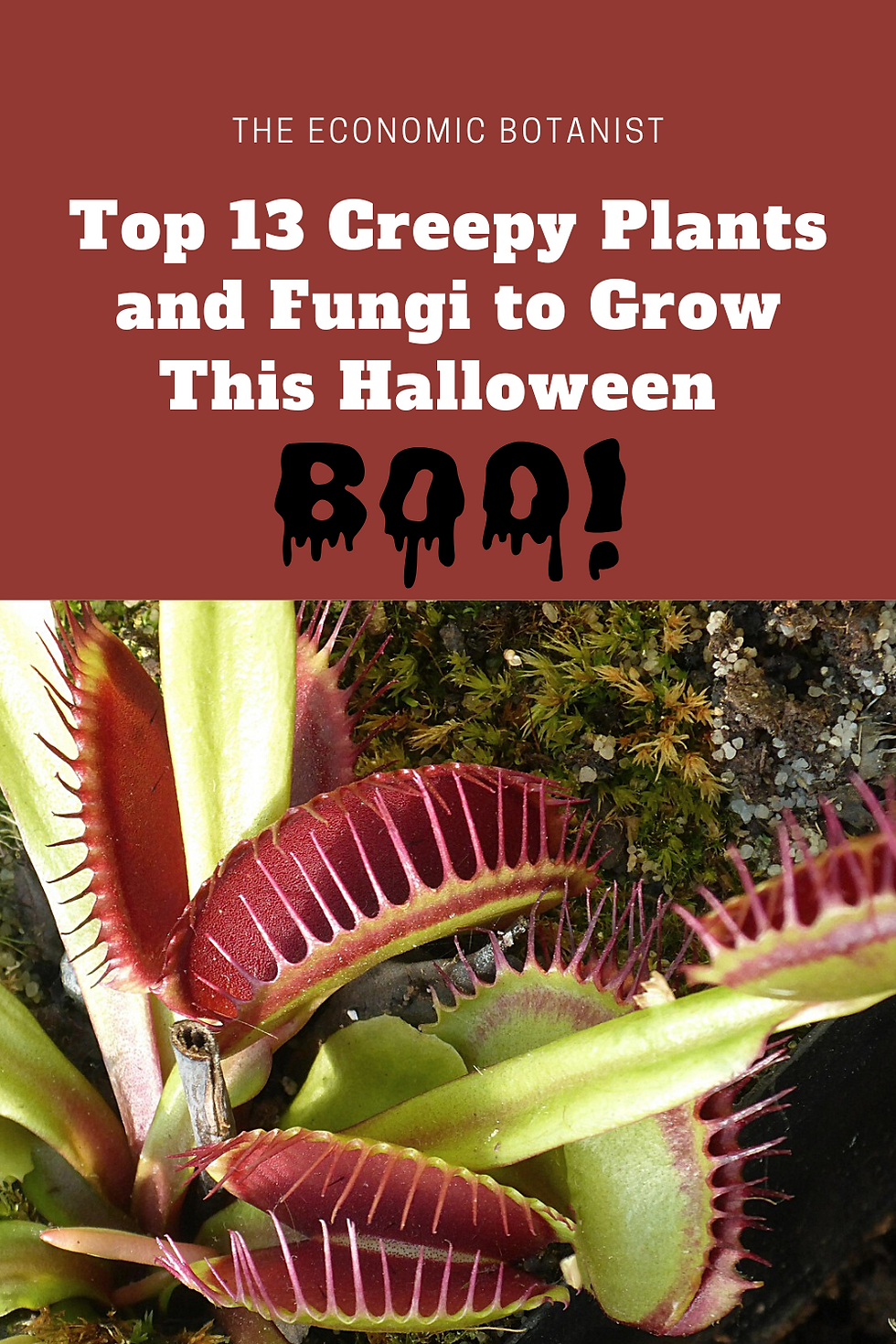13 Creepy Plants and Fungi Perfect for Halloween
- The Economic Botanist

- Jul 17
- 6 min read
This article is about botanicals perfect for a Halloween mood. Boo!

“Nature’s quirkiest creations often thrive in the shadows—let these creepy plants and fungi guide you into the spooky side of science.” – The Economic Botanist
Have you ever wondered which plants and fungi give Mother Nature her eerie Halloween vibes? Well, you’re in for a treat. We’re about to explore 15 seriously spooky organisms—complete with weird shapes, ghostly colors, and chilling biology. I’ll break everything down in a casual, friendly tone—but still sprinkle in solid research so you know I’ve done my homework. Ready? Let’s creep in.
On this page
Darkly Elegant: Corpse Flower (Amorphophallus titanum)
Poisonous Beauty: Belladonna (Atropa belladonna)
Batty Blooms: Bat Flower (Tacca chantrieri)
Ghostly Glow: Ghost Pipe (Monotropa uniflora)
Fungal Horror: Devil’s Fingers (Clathrus archeri)
The Sticky Trap: Venus Flytrap (Dionaea muscipula)
Deadly Mushroom: Death Cap (Amanita phalloides)
Tree of Doom: Witch Hazel (Hamamelis virginiana)
Hairy Horror: Old Man’s Beard (Usnea spp.)
Parasitic Creeper: Dodder (Cuscuta spp.)
Spooky Spiral: Curl-leaf Mountain Mahogany (Cercocarpus ledifolius)
Fungi Feeder: Fly Agaric (Amanita muscaria)
Darkly Elegant: Corpse Flower (Amorphophallus titanum)
Why It’s Creepy
Science Behind the Spook
|  |
You probably won’t have room in your backyard for one of these giants—but it’s a perfect example of how nature gets creative. Think of it as the Halloween superstar of the plant world.
Poisonous Beauty: Belladonna (Atropa belladonna)
Why It’s Creepy
Science Behind the Spook
|  |
Just picture a plant with beautiful purple flowers or luscious brown/black berries—but pregnant moms or curious kids could end up in serious trouble. Combine beauty with danger, and you’ve got classic Halloween vibes.
Batty Blooms: Bat Flower (Tacca chantrieri)
Why It’s Creepy
Science Behind the Spook
|  |
It’s a reminder that sometimes being spooky is just a clever survival strategy—like a Halloween costume straight from grandma’s costume trunk.
Ghostly Glow: Ghost Pipe (Monotropa uniflora)
Why It’s Creepy
Science Behind the Spook
|  |
They’re rare, fun to spot, and feel like nature’s own Halloween decorations. You won’t find them in your garden center—but if you see one, consider it a trick-or-treat from the forest.
Fungal Horror: Devil’s Fingers (Clathrus archeri)
Why It’s Creepy
Science Behind the Spook
|  |
These fungi are hilarious and horrifying. Perfect for creepy hairpins or a Pinterest moment—if you dare.
The Sticky Trap: Venus Flytrap (Dionaea muscipula)
Why It’s Creepy
Science Behind the Spook
|  |
You might grow these in a pot, and trust me—it never gets old watching them spring shut.
Deadly Mushroom: Death Cap (Amanita phalloides)
Why It’s Creepy
Science Behind the Spook
|  |
We always warn gardeners: unless you’re absolutely sure, don’t forage wild mushrooms. This one looks innocent until it kills.
Tree of Doom: Witch Hazel (Hamamelis virginiana)
Why It’s Creepy
Science Behind the Spook
|  |
You can plant this in your yard and enjoy those stringy golden blooms right into October—no synthetic spooky vibe required.
Hairy Horror: Old Man’s Beard (Usnea spp.)
Why It’s Creepy
Science Behind the Spook
|  |
Want real gothic vibes? Hang some of this on fences or trees and bam—your yard’s got natural Halloween décor.
Parasitic Creeper: Dodder (Cuscuta spp.)
Why It’s Creepy
Science Behind the Spook
|  |
Grow it in your garden? You might literally choke your host plants—so spooky, literally.
Spooky Spiral: Curl‑leaf Mountain Mahogany (Cercocarpus ledifolius)
Why It’s Creepy
Science Behind the Spook
|  |
In fall, walk past a thicket of these and you’ll hear a whisper—like nature’s own Halloween rattle.
Fungi Feeder: Fly Agaric (Amanita muscaria)
Why It’s Creepy
Science Behind the Spook
|  |
They’re undeniably photogenic and perfect for spooky woodsy scenes—just don’t eat them.
Carnivorous Phantom: Pitcher Plant (Nepenthes spp.)
Why It’s Creepy
Science Behind the Spook
|  |
Pot one on your porch during October—it’s like having your very own Halloween monster in a pot.
The Bottom Line
Creepy plants and fungi aren’t just eye candy for Halloween—they’re biological marvels shaped by evolution. From plants disguised as carrion to fungi that glow, there’s real science wrapped in this spooky side of nature. By learning about them, we appreciate how resilient and creative life can be. Plus, they’re perfect themes for a fall-themed garden, classroom talk, or just to impress people at your costume party (without needing to inflate a giant spider).
********************
If you loved creeping through these eerie species, why not bring a touch of Halloween to your garden? Even something small like a potted pitcher plant or a bit of Old Man’s Beard draped in your yard can spark curiosity and conversation. Subscribe to our blog for more wild nature stories and behind-the-scenes science in plain English. Let’s explore the cool, creepy corners of our planet together—one post at a time!





Comments